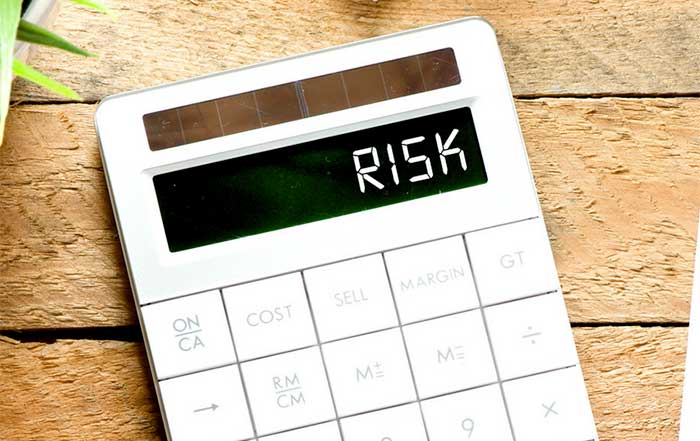In an era defined by constant disruption, globalization, and digital transformation, the ability to take calculated risks has become one of the most valuable skills for entrepreneurs and professionals alike. The nature of work, business creation, and career growth is no longer linear or predictable. Instead, it is shaped by innovation, global markets, and evolving technologies. While risk has always been a component of entrepreneurship, in 2025 it is the ability to balance risk with foresight, strategy, and adaptability that separates thriving leaders from those who struggle.
For readers of CreateWork.com, who are already exploring opportunities in freelancing, remote work, business startups, and AI automation, mastering the art of calculated risk-taking is essential for both personal and professional success. The following comprehensive guide offers a deep dive into understanding, evaluating, and executing career risks that drive long-term growth while safeguarding financial stability and reputation.
Why Calculated Risks Matter in 2025
Calculated risks are not reckless gambles. They involve strategic planning, research, and scenario analysis to minimize uncertainty while maximizing potential upside. In today’s economy, where artificial intelligence, automation, and remote-first business models dominate, the greatest opportunities often lie outside of comfort zones.
Entrepreneurs who embrace calculated risks gain access to new markets, attract better investment opportunities, and maintain resilience in industries undergoing disruption. According to World Economic Forum research, the jobs of the future will prioritize adaptability, creativity, and critical thinking—skills that are sharpened by risk-taking experiences.
Moreover, in an increasingly competitive landscape, staying risk-averse often leads to stagnation. Companies like Amazon, Tesla, and ByteDance built global dominance by taking risks others avoided. Similarly, professionals who pursue new ventures, embrace upskilling, or pivot industries position themselves at the forefront of change.
Understanding the Psychology of Risk
Risk-taking in careers is influenced by mindset as much as by opportunity. Human beings are naturally loss-averse; behavioral economics research shows that most people fear losing something more than they value gaining something of equal size. This mindset often prevents entrepreneurs from leaving secure jobs or investing in untested ideas.
However, the psychology of calculated risk involves reframing. Instead of asking, “What if I fail?”, professionals are encouraged to ask, “What will I miss if I never try?”. By shifting focus to opportunity costs—the loss incurred by not taking action—entrepreneurs can build the courage required to step into uncertain territory with confidence.
Successful leaders often manage this psychology by:
Developing a clear vision of their end goals.
Using mentorship networks to validate ideas.
Investing in continuous education to reduce knowledge gaps.
Practicing small risks before committing to larger ventures.
Learning to embrace discomfort is often the first step in mastering risk-taking. Entrepreneurs who acknowledge that uncertainty is unavoidable—and who instead focus on preparation—are better equipped to handle challenges.
🎯 Calculated Risk Assessment Tool
Identifying When to Take Risks
Timing plays a central role in determining whether a career risk pays off. Market cycles, industry trends, and personal readiness must all align to create the right window of opportunity. For instance, moving into AI and automation today offers more growth potential than waiting another five years, when markets may become saturated.
Key indicators that a calculated risk may be worth pursuing include:
Market Gaps: Is there a problem no one else is addressing effectively?
Technological Shifts: Are new tools enabling opportunities that were previously unfeasible?
Personal Alignment: Does the opportunity align with your skills, passions, and resources?
Support Networks: Do you have access to mentors, partners, or financial backing?
Upside Potential: Does the potential benefit outweigh the risks involved in failure?
By weighing these signals against personal and professional goals, entrepreneurs can determine whether a risk is worth pursuing now or whether it should be revisited in the future.
Evaluating Career Risks: A Strategic Framework
To make risk-taking manageable, entrepreneurs should apply a structured evaluation process. One practical framework involves four steps:
1. Research and Data Collection
Before making a decision, gather as much data as possible. This includes studying competitors, reading industry reports from sources like Harvard Business Review, and consulting with experienced professionals.
2. Scenario Planning
Develop multiple “what if” scenarios to forecast both best- and worst-case outcomes. This exercise allows entrepreneurs to prepare for setbacks while staying open to unexpected opportunities.
3. Risk-Reward Ratio
Calculate the financial, reputational, and personal risks against potential benefits. Entrepreneurs should not only assess monetary gains but also factors like skill development, network growth, and personal fulfillment.
4. Exit Strategy
Always have a contingency plan. Whether that means returning to freelancing, shifting into employment opportunities, or pivoting the business model, knowing there is a safety net reduces fear and increases confidence.
Common Career Risks Entrepreneurs Face
While every industry and professional journey is unique, there are several common risks that entrepreneurs across the globe encounter.
Leaving a Stable Job for Entrepreneurship
The decision to move from salaried employment to running a startup is one of the most significant risks professionals face. However, with thoughtful planning and savings strategies, it can lead to greater autonomy, financial freedom, and fulfillment.
Pivoting Industries
Shifting from finance to technology or from traditional marketing to digital advertising involves substantial learning curves but can open access to rapidly expanding industries.
Expanding Internationally
Globalization makes expansion into foreign markets attractive, but cultural barriers, compliance issues, and logistical challenges raise the stakes.
Embracing Emerging Technologies
In 2025, opportunities abound in areas such as blockchain, AI-driven productivity tools, and renewable energy. Yet early adoption carries uncertainty regarding regulation and scalability.
Building a Personal Brand
Entrepreneurs who step into public visibility through creative work or thought leadership face risks to their reputation, but strong personal branding often unlocks premium opportunities.
Financial Strategies for Risk Management
Taking career risks without a financial strategy is akin to sailing into uncharted waters without a compass. Entrepreneurs and professionals must recognize that financial preparedness is the backbone of sustainable risk-taking. In 2025, where global markets are volatile and influenced by geopolitical tensions, climate change, and technological disruption, a clear financial plan provides both security and confidence.
Building a Financial Cushion
Before making a career leap—whether launching a startup, shifting into freelancing, or expanding internationally—having a safety net is essential. Experts often recommend setting aside at least six to twelve months of living expenses. This buffer allows entrepreneurs to focus on building momentum without the constant stress of financial survival.
Freelancers who diversify income streams through multiple clients or side projects also mitigate the risks of dependency on one employer. Platforms that facilitate freelancer growth offer tools for networking, contract security, and payments, ensuring that income remains stable even during transitions.
Leveraging Smart Investments
Entrepreneurs who wish to take bigger career risks often balance them with conservative investments. Allocating capital into diversified assets—such as global index funds, real estate, or sustainable business ventures—creates passive income streams that can offset risks associated with experimental projects.
Additionally, new forms of digital investment, such as tokenized real-world assets and decentralized finance, offer modern opportunities for wealth diversification. However, such investments require thorough research, as regulatory frameworks continue to evolve.
Budgeting for Growth
Calculated risks often involve upfront costs: marketing campaigns, technology adoption, or legal compliance. To manage these, entrepreneurs must develop clear budgets with built-in buffers for unexpected expenses. Tracking tools such as personal finance platforms or integrated AI-driven dashboards simplify cash flow management and enable smarter decisions.
By treating risk as an investment rather than an expense, entrepreneurs can strategically allocate funds toward projects that promise long-term growth.
Global Perspectives on Risk-Taking
Career risk-taking looks different across regions, influenced by cultural norms, economic conditions, and regulatory landscapes. Entrepreneurs in the United States may approach risks with aggressive innovation, while those in Europe or Asia may prioritize measured, gradual expansion.
United States
The U.S. remains one of the most vibrant ecosystems for risk-takers, with a culture that rewards disruption. Venture capital firms continue to support bold ideas, from AI-powered platforms to green technology startups. However, U.S. entrepreneurs also face risks tied to economic fluctuations, high healthcare costs, and competitive markets.
United Kingdom and Europe
In the U.K. and across Europe, calculated risks are often influenced by regulation and market integration. For instance, expanding into multiple EU nations involves navigating varying labor laws and taxation systems. Still, the availability of grants, innovation hubs, and strong financial institutions creates opportunities for entrepreneurs who are prepared.
Asia-Pacific
Countries such as Singapore, South Korea, and Japan are known for technological leadership, offering fertile ground for startups. At the same time, cultural emphasis on stability means entrepreneurs often face greater scrutiny when pursuing untested business models. In emerging economies like Thailand and Malaysia, risk-taking is fueled by digital adoption and expanding middle classes.
Africa and South America
Markets in Africa and South America present high-risk, high-reward environments. While challenges such as infrastructure gaps and political instability exist, opportunities in sectors like fintech, renewable energy, and mobile solutions are immense. Entrepreneurs who are willing to adapt to local contexts often reap significant rewards.
By studying global trends, entrepreneurs gain valuable insights into how risk is approached differently and can adapt strategies accordingly.
Case Studies of Successful Risk-Takers
Elon Musk and Tesla
Elon Musk epitomizes calculated risk-taking. His decision to invest personal wealth into Tesla at a time when electric vehicles were considered niche has reshaped the global automotive industry. Musk’s strategy combined a willingness to endure short-term financial losses with a long-term vision for sustainable transportation.
Whitney Wolfe Herd and Bumble
Whitney Wolfe Herd, founder of Bumble, took the risk of entering a saturated dating app market. By differentiating her platform with a women-first approach, she carved a unique niche and built a billion-dollar business. Her success demonstrates the importance of risk combined with clear market positioning.
African Fintech Innovators
In Nigeria, fintech companies such as Flutterwave took bold risks by tackling challenges in payments and cross-border transactions. Despite regulatory hurdles, they leveraged Africa’s mobile-first economy to create scalable, impactful businesses. These examples highlight how calculated risks can unlock opportunities in underexplored markets.
Practical Steps for Taking Calculated Risks
Entrepreneurs looking to embrace risk in their careers can follow actionable steps to minimize downsides while maximizing success.
Start with Small Risks
Before making a drastic move, test the waters with smaller experiments. This could include launching a side hustle, taking on short-term freelance contracts, or piloting a product with a limited audience. By iterating quickly, entrepreneurs gather valuable feedback without overcommitting resources.
Build a Support Network
Mentorship and collaboration reduce the psychological burden of risk. Entrepreneurs should actively seek out communities, accelerators, and advisors who can provide guidance. Platforms dedicated to business startup growth often facilitate connections with investors and mentors.
Upskill Continuously
In 2025, industries shift rapidly, and skills that are relevant today may be obsolete tomorrow. Entrepreneurs who invest in upskilling—whether in AI, blockchain, or digital marketing—strengthen their ability to adapt and seize opportunities.
Protect Mental and Physical Wellbeing
Risk-taking can be emotionally and physically draining. Entrepreneurs must prioritize lifestyle choices that support resilience, such as exercise, mindfulness, and balanced work routines. A strong personal foundation ensures sustained performance under pressure.
Embracing Technology in Risk-Taking
Technology has transformed how entrepreneurs evaluate and manage risk. Tools such as predictive analytics, AI-driven productivity platforms, and blockchain-based contracts enable greater transparency and smarter decision-making.
For example, data visualization platforms help entrepreneurs simulate outcomes before making commitments, while AI assistants streamline financial planning. Companies such as IBM and Google continue to pioneer risk assessment tools that businesses can leverage for smarter strategies.
By integrating technology into their decision-making process, entrepreneurs gain access to real-time insights that reduce uncertainty and enhance confidence.
The Role of Failure in Risk-Taking
No discussion on calculated risks is complete without acknowledging failure. Failure, when approached constructively, is a critical part of the entrepreneurial journey. Leaders such as Jeff Bezos have publicly emphasized the importance of experimentation and the willingness to fail in pursuit of innovation.
Entrepreneurs must learn to normalize failure, treating it as a feedback mechanism rather than an endpoint. Post-mortem analyses, journaling lessons learned, and sharing experiences with peers all contribute to resilience.
Ultimately, failure refines judgment, builds character, and sets the stage for future success.
Conclusion: Turning Risk into Opportunity
Taking calculated career risks in 2025 is less about reckless gambles and more about strategic foresight, preparation, and adaptability. Entrepreneurs and professionals who learn to evaluate opportunities through structured frameworks, maintain financial discipline, and leverage technology position themselves for long-term success.
For the CreateWork.com community, embracing risk is not optional—it is essential for growth in an unpredictable global economy. Whether transitioning into remote work opportunities, building a freelance career, or scaling a global startup, the ability to navigate uncertainty with confidence will define the leaders of tomorrow.
Risk, when calculated, becomes not a threat but a bridge to innovation, resilience, and enduring success.




